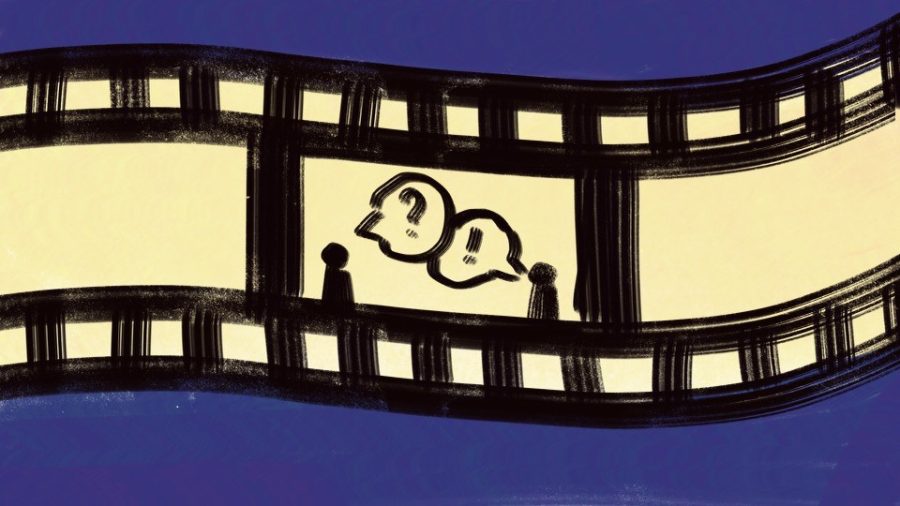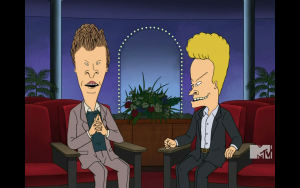Necessary Controversy: Licorice Pizza
Coming of age film, Licorice Pizza has received criticism for portrayals of sexism, racism, homophobia, social consciousness
September 8, 2022
Characters in movies, much like real people, are not – and should not – be saints.
Licorice Pizza, Paul Thomas Anderson’s 2021 coming-of-age period piece has attracted significant attention. Much of this has been good. The film received three academy awards, praise from critics, and a 91 percent score on review aggregator Rotten Tomatoes. The film’s content has also proved to be controversial. Prime targets of criticism are the depictions of racism, sexism, homophobia, and social consciousness that were rampant during Licorice Pizza’s idyllic ‘70s San Fernando Valley.
Licorice Pizza follows the relationship between Gary Valentine (Cooper Hoffman), a precocious and extremely ambitious fifteen-year-old and Alana Kane (Alana Haim), a wayward 25-year old looking for direction. While the relationship stays platonic for most of the film, it exists in a grey area some viewers may find hard to stomach.
In addition, Gary and Alana’s California adventures bring them into contact with a cast of reprehensible characters, including fictionalized depictions of real life characters Jon Peters and Jerry Frick. Peters is a white-nosed misogynist while Frick uses a racist caricature of a Japanese accent when addressing his Japanese wives. Frick’s character in particular has drawn the most controversy.
The Media Action Network for Asian Americans (MANAA) released a statement where they encouraged Licorice Pizza to be passed over for awards because of the racist content.
“The cringe worthy scenes in ‘Licorice Pizza,’ which takes place in 1973, do not advance the plot in any way and are included simply for cheap laughs,” a Dec. 18, 2021 MANAA press release said. The statement would go on to quote activist Anita Sarkeesian as saying, “… It is irresponsible to throw that (the racist scenes) in as an aside without actually signaling that this is both currently AND was always bad.”
A New York Times interview with Anderson addressed the outcry. The interviewer explained to Anderson that Frick’s offensive behavior had actually caused the audience to gasp.
“I think it would be a mistake to tell a period film through the eyes of 2021… You have to be honest to that time,” Anderson responded.
The material in the picture is unquestionably offensive. No argument could be made to disagree, in my mind. The question the film and the media response brings up is whether or not a film is required to be didactic in its depictions of unacceptable behavior. What can, and should, be included in movies these days?
The removal, censorship, or alteration of the offensive scenes and content in Licorice Pizza would not only damage the authenticity of the film, it would be far more problematic than their inclusion. Too many films desire to be comfortable for audiences to digest. Look at a film like Hidden Figures. Over and over again white audiences are given the easy way out, their guilt assuaged by the (not so historically accurate) actions of the ‘valiant’ white man. Viewers of that film might recall the white boss character knocking down signs on segregated bathrooms and the astronaut taking a specific interest in the calculating ability of the main character. These – and other things – are fabrications designed to let white audiences walk away from theaters unscathed. Licorice Pizza gives nobody an escape route. Audiences are left to sit with their discomfort, whether it’s over the atrocious age gap of the main characters or the racist restaurateur.
Erasing the scenes in the picture that depict racism, sexism, or homophobia would portray the ‘70s with nothing but rosy lenses, allowing the awful behavior plenty of people engaged in to be re-written and ignored. Setting up scenarios where the offending characters were punished or explicitly called out would be a cop-out for the audience and perpetuate an incorrect narrative about society then AND now. People, especially those with affluence and money, do nasty things and get away with them. This was more true in the ‘70s.
The best art calls out its audience. It exposes their insecurities, fears, judgements, and problematic behavior. To intentionally position the audience as scolds by revision of material allows them to avoid conscious reflection. Bad things in films must make people uncomfortable, lest its evil be divested.
The age gap in Licorice Pizza should make you uncomfortable. As appalling as some may find it, things like that did happen. Ignoring it runs dangerously close to condoning it. And audiences should not demand to be shown a parade of perfect, sensitive characters, because that’s not how people are. It is a triumph that Anderson gets audiences to be so uncomfortable with what he has created, because undoubtedly it will linger in their minds far longer than any sanitized, bowdlerized picture ever would.
Do you find it acceptable for Gary and Valentine to have the relationship that they do? Do you find it acceptable for Jon Peters to harass every woman he comes in contact with? Do you find it acceptable to use a racist accent when speaking to people? Your answers should all be resounding ‘No!’s. If they aren’t, take a long time to think about why. And if you agree, then the movie and its characters, and film and arts in general, should not take any more efforts to make the uncomfortable comfortable.















